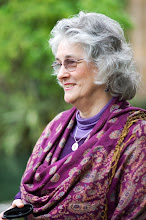The American Academy of Religion (AAR) celebrated 100 years at its Annual Meeting in Montreal in November. For four days scholars and theologians gathered to present papers, serve on panels and attend plenary addresses, films, concerts, walking tours, and concerts.
People who study Pagans and Paganism, as well as some who practice one or another form of Paganism, comprised a portion of the presenters and attendees. For about 12 years a Contemporary Pagan Studies group has been establishing its presence and credibility, organized by Chas Clifton, Michael York, Wendy Griffin, Kat McEachern and others. Thanks to them, Contemporary Pagan Studies is now an official Group within the AAR. (Areas of study begin as Consultancies. When they have attracted greater interest, they progress to become a Group. Fully established areas are called Sections.)
This year’s offerings in the Contemporary Pagan Studies Group and Indigenous Religious Traditions Group (combined) began on Saturday afternoon with a session on the theme of “Common Ground/Differences: Pagan and Indigenous Studies in Religion.” Suzanne Owen of Leeds Trinity spoke on “Indigenous Religious Expression? Mi’kmaq Tradition and British Druidry,” followed by “Houses for the Holy? A Reconstructionist Debate among Modern Norse Pagans,” by Michael F. Strmiska of Orange County Community College in Middletown, NY, then “The Goddess and the Virgin: Examining the Role of Statue Devotion in Western Europe,” by Amy Whitehead of The Open University in the UK. Ms. Whitehead compared the devotional practices of the Virgin of Alcala in Spain with those of a contemporary goddess temple in England. One scheduled presenter did not appear. Jace Weaver of the University of Georgia then responded to the three papers.
“Idolatry” was the theme of the Contemporary Pagan Studies Group session on Sunday morning. Graham Harvey of The Open University spoke on “Materiality and Spirituality Aren’t Opposites (Necessarily): Paganism and Objects,” followed by Bron Taylor of the University of Florida on “Terrapolitan Earth Religion or Ecototalitarianism? Assessing the Peril and Promise of Nature Religion in Environmental Governance,” and “Idolatry, Ecology, and the Sacred as Tangible” by Michael York of the Academy for Cultural and Educational Studies, London.
The third and final session of the Contemporary Pagan Studies Group addressed the theme “The Book and the Practice: The Relationship between Literature and Contemporary Paganism.” Four papers were read. Chas S. Clifton of Colorado State University, Pueblo, called his talk “Before Stranger: Twentieth Century Paganism as a Literary Response to Texts.” Christine Kraemer of Cherry Hill Seminary spoke on “Contemporary Paganism, Utopian Reading Communities, and Sacred Nonmonogamy: The Religions Impact of Heinlein and Starhawk’s Fiction,” followed by “Journeys Upstream and Encounters Across Time: Reading the Pagan and Indigenous through Cinema,” by Adrian Ivakhiv of the University of Vermont, and “Open Source Religions Versus Citationality: The Function of Literature in Contemporary Pagan Praxis,” by Megan Goodwin of the University of North Carolina. While all presenters put forth good data and analyses, I found Dr. Kraemer’s paper to be exceptionally informative, insightful and polished.
In addition, Pagan scholars contributed papers to other related Sections, most notably the Ritual Studies Group (“The Denial of Ritual”) and New Religious Movements, but also in the Death, Dying, and Beyond Consultation (“American Funerary Practices Since the 1960s”), Comparative Studies in Religion Section (“Trees, Goddesses, and Conflict in Myth and Theology”), Bioethics and Religion Group and Religion and Ecology Group (combined) (“Frankenfood, Bridges, and Hazards: An Interdisciplinary Exploration of Social Justice and Sustainability in a Global Context”), Religion, Media, and Culture Group and Ritual Studies Group (“Exploring Ritual in Contemporary Media and Culture,” with one paper entitled “Performing Religion in Virtual Worlds: A Contested Field”), and Religion and Ecology Group (“Exploring Ecological Discourse in Global Contexts: Tensions and Tropes Rooted in Local Soils,” including papers on “Elephant Tails and a Mother’s Good Deeds: Local Expressions of Mother Earth Inspire Engaged Buddhism in Southeast Asia,” “Religion, Ecology, and Globalization (Colonialism, Imperialism, Population, Pronatalism, Political Holism, and Food),” and “Grow Bees Grow: Of the Sacred and of Human Affinity with Bees”).
A dean, a department chair, a Board member, and several faculty members from Cherry Hill Seminary attended sessions on many topics, from those on distance learning, a field in which Cherry Hill Seminary is in the vanguard, to those on Religion and Politics; Ethics; Science, Technology, and Religion; Music and Religion (“Oxum and Yansan: Candomblé Trickster Archetypal Models for Female Drummers,” “Scriptures, Soundtracks, and the Acrobatic Self: Reception and Use of the Music of U2 in the Contemporary Process of Identity Formation”); Religion, Medicines, and Healing; Queer Theory and LGBT Studies in Religion; and many others.
I attended on behalf of Cherry Hill Seminary and as an interfaith representative of the Covenant of the Goddess. I’ve managed to make it to most of the past 12 annual meetings and I really enjoy the stimulation, not to mention the opportunity to become acquainted with the best of Pagan scholars. (I took notes at some of the presentations I attended and plan to share my impressions in more detail in subsequent posts.)
Note: This piece previously published at examiner.com.
Thursday, January 07, 2010
Paganism and the Academy: A Brief Overview of Pagans at the AAR
Subscribe to:
Post Comments (Atom)

3 comments:
Is there to be a proceedings where these papers are published? I'd be very interested.
Some of these presentations will likely end up in the journal for the study of religion, nature and culture (see www.religionandnature.com). My own presentation drew on my latest book, Dark green religion: nature spirituality and the planetary future, which is introduced at my website.
I'm reading Dark Green Religion now and loving it. It ties together a lot of ideas and people in ways that are helping me to better understand who we are and what we're doing. I'll be writing more about it when I'm done. Thanks, Bron.
Post a Comment